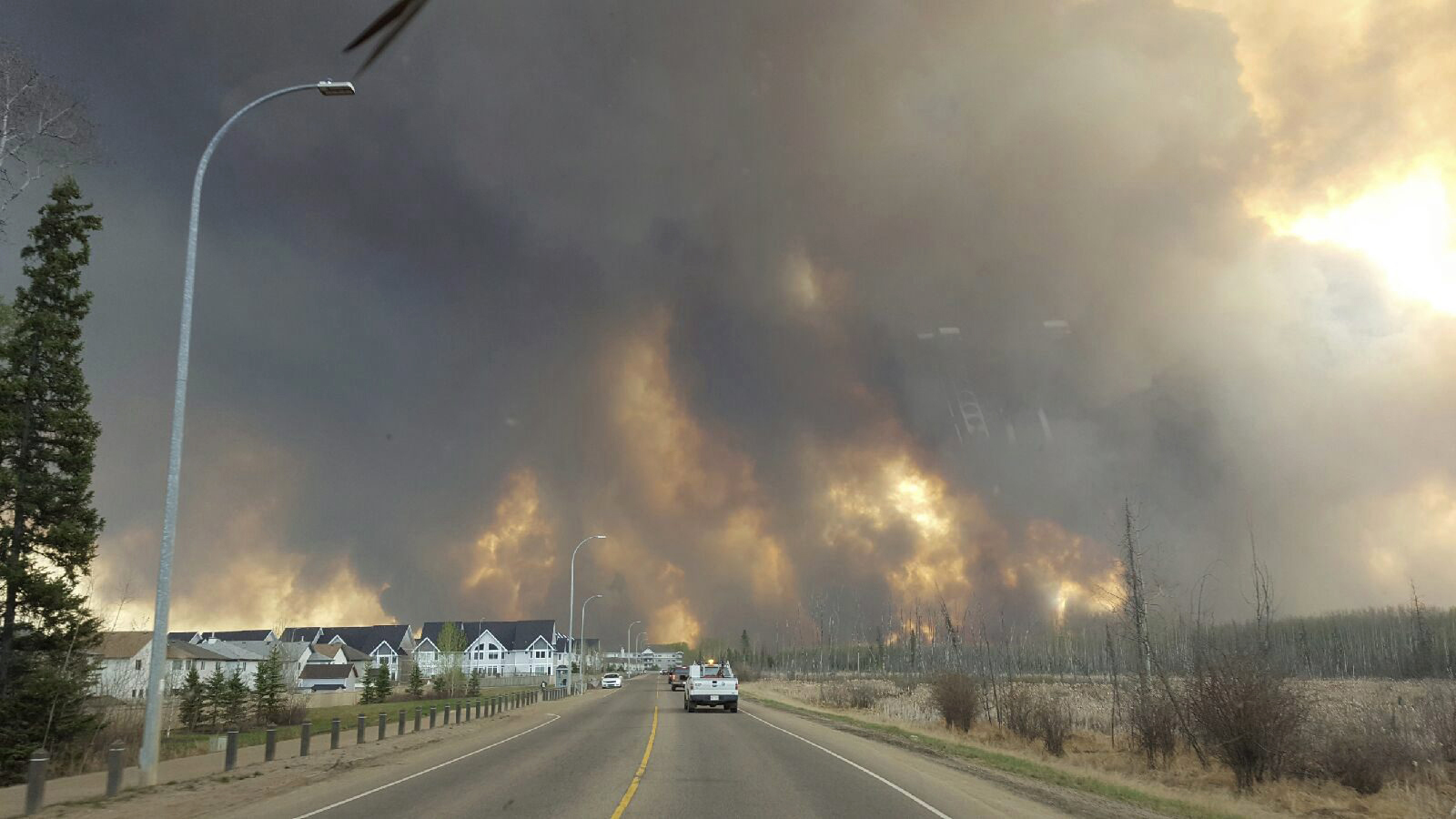It’s like something out of The Walking Dead, said one of the eyewitnesses.
I just spent several days making newspapers that reported the distressing details of a national disaster.
Wildfires in Alberta, western Canada, had looked under control but then the wind increased. Everything changed.
Within hours, a mandatory evacuation order had 88,000 people on the move. Many of them came from the community of Fort McMurray and some left behind homes that were already burning.
I saw images of family photos spilling from a suitcase by the roadside, of a woman escaping the blaze on horseback and of long lines of traffic filling the roads, nose-to-tail, for many kilometres.
Around the evacuees, the trees ignited. Behind them, even the roads started to burn. The sky filled with flames and smoke. In these situations, it is natural for us to turn to fantasy as we try to express ourselves. We have no frame of reference for disaster, because, here in our affluent world, we are unlikely to experience it. We turn to unreal things when reality becomes too much for us to process.
It was like a nightmare, we breathe, harking back to times when we were at our most vulnerable. It was a scene from Hell, we say, because that’s something we have only imagined.
And we talk about films. When September 11 happened, we watched TV coverage and referred to blockbuster movies because, until then, such a thing only existed as a special effect. The London Tube bombings were the same but more frightening because the location was familiar.
That was what was most disturbing, for me, when I saw the scenes in Alberta. Having become accustomed to life in Canada, the familiarity of the streets, stores and cars added a layer of discomfort and made me feel worse for the people involved.
Often, media organisations are criticised for enhanced reporting of bad times in western places, while treating Third World disasters too lightly. A side-effect of our comfortable lives is we find zombie TV shows more familiar than real disasters in the world’s poorest places. It feels odd to realise it, watching such suffering but we’re lucky.
